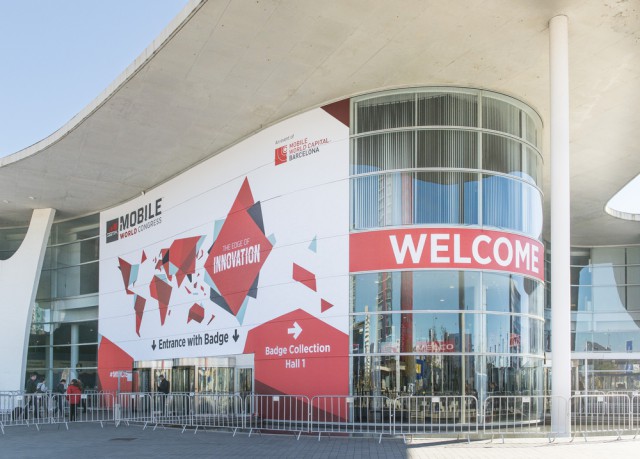
At Mobile World Congress (MWC) tides will start to turn. There won’t be an overnight revolution powered by shiny new gadgets, but technologies we’ve seen evolving over recent years will start to demonstrate their real potential.
We expect to see five major technology themes come to the fore in Barcelona this year:
1. Internet of Things (IoT) Will Be Evident in the Everyday Enterprise, but Still Earning its Place
We’re going to move past the talking stage, and will see a significantly broader set of organizations start to adopt the IoT in 2016. There will be a rapid increase in the number of IoT-enabled projects, almost all trial projects that enable experimentation, new business model development and services that didn’t exist before, as organizations begin to test and feel their way to what might be possible through the IoT.
Traditional products companies will be able to start transforming their approach to revenue generation with the IoT, trying out new and diverse service offerings to complement and grow existing portfolios.
No one organization can reap the benefits of the IoT alone, so we will also see platforms and standards enabling a more open ecosystem to facilitate IoT adoption. There will be cross-fertilization and mutually beneficial business services created across enterprises, geographies and industries, blurring previous borders and encouraging innovation through ‘fast fail’ trials of IoT projects.
2. The Third Phase of Enterprise Mobility -- Connected workers
This is the year of the third phase of enterprise mobility. The first phase empowered users with mobile devices and email on the move. The second was basic transactional apps that could help cut travel time, and removed the need for paper-based operations. The third phase we’re now entering is about the transformation of business processes using mobile technologies, made more accessible thanks to the reduced cost of computing capability, familiarity of employees with devices, and the increased acceptance by CIOs of BYOD.
A major element of the third phase will be wearable devices as tools enabling enterprise mobility. At MWC, we’ll see evidence of the enterprise market evolving using new mobile devices, as enterprise pilot projects evolve into full roll-outs of wearable technology, particularly in the manufacturing and field force sectors.
This enhanced use of wearables will create a force of "Connected Workers", able to access the information they need when they need it, collaborating with colleagues remotely and receiving instructions on the go, including mapping information or advice on tools needed for a certain job, sent directly to the device of their choice.
3. Device Security for Consumers and Enterprises
As consumer connected devices increase in popularity and the choice in form factors increases, providers will start to look for ways to help users choose which device is for them. Security and data privacy will become an important differentiator, as even consumers with little interest in technology will hear stories about breaches and hackings, and will look to be reassured about how secure their personal data is, but also how far that data will be legally shared with others.
This concern is just as relevant for enterprise device users, and we expect discussions between different parts of the business such as HR and Legal to start in earnest this year to address this.
Recent Accenture research found that for nearly half (47 percent) of respondents, security concerns and privacy risks rank among the top three barriers to buying an IoT device or service. To address this, innovative and collaborative approaches to containing and managing device security over the lifetimes of devices and the services sold alongside them will emerge.
For devices with longer lifecycles and more complex supply chains such as connected vehicles, each element of that supply chain will need to work together to ensure the creation of an holistic security solution for that device.
4 Autonomous Commerce
As the IoT makes its way into people’s homes, cars and other devices, we’re going to hear more about autonomous commerce. Devices will be able to make purchases without any human intervention, and in years to come, they will start to learn our needs, wishes and intentions without our needing to tell them.
The technology already exists for this to happen, but at MWC discussions around an increasing need for education will take place, as well as how the payments ecosystem needs to adapt to ensure that user experiences for frictionless payments remain secure and simple, regardless of how many devices -- varying from white goods to cards to mobile devices -- can store payment details.
5. Analytics at the Edge
We will see more connected devices on display this year that are able to carry out analytics on selected data in-situ, in near real-time and without the need to send data to the cloud for analytics to be applied. This will allow for faster, autonomous insights generation and decision-making, and will be a major step towards untethered machine learning in people’s homes and enterprises.
As the pace of edge computing adoption accelerates, it enables deliberate, highly computational dependent business functions to be performed on a device, ultimately leading to more autonomous, responsive behavior that enables machines to play an active part in the world around us.
Jim Bailey, senior managing director, Accenture Mobility.
Published under license from ITProPortal.com, a Net Communities Ltd Publication. All rights reserved.
Photo Credit: catwalker/Shutterstock

